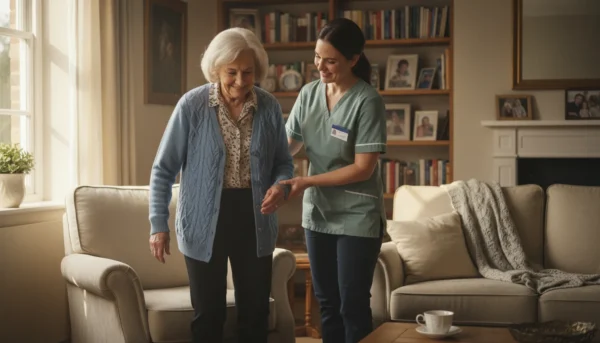
Making It a Part of Your Daily Routine
The key to reaping the long-term benefits of these mobility exercises is consistency. Making movement a regular part of your day is more effective than doing a long, intense session only once in a while. Here are some practical tips to help you build a lasting habit.
Start Small and Be Patient: You don’t need to do all seven exercises every single day. Begin by choosing two or three that you enjoy and commit to doing them for just 10 minutes a day. As you grow stronger and more confident, you can gradually add more exercises or increase the duration. Celebrate your progress along the way.
Link It to an Existing Habit: The easiest way to form a new habit is to attach it to one you already have. This is called “habit stacking.” For example, you could decide to do your ankle circles and seated marches while your morning coffee is brewing. Or, you could do your wall push-ups and arm circles right before you brush your teeth at night.
Listen to Your Body: Some days you will feel more energetic than others. On days when you feel tired or sore, it’s okay to do a shorter, more gentle routine or even take a rest day. The goal is to build a sustainable practice, not to push yourself to the point of exhaustion or injury. Flexibility is key.
Create a Comfortable Environment: Designate a safe, clutter-free space in your home for your exercises. Put on some music you enjoy to make the experience more pleasant. Having everything you need, like your sturdy chair and a water bottle, ready to go will make it easier to get started.
Find a Partner: Exercising with a friend, family member, or spouse can be a wonderful source of motivation and accountability. You can encourage each other and make it a social activity you look forward to. If you live alone, consider joining a local senior center fitness class to find a community of like-minded individuals.
Disclaimer: This article is for informational purposes only and does not constitute medical advice. The content is not intended to be a substitute for professional medical advice, diagnosis, or treatment. Always seek the advice of your physician or other qualified health provider with any questions you may have regarding a medical condition.


















